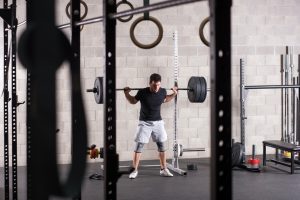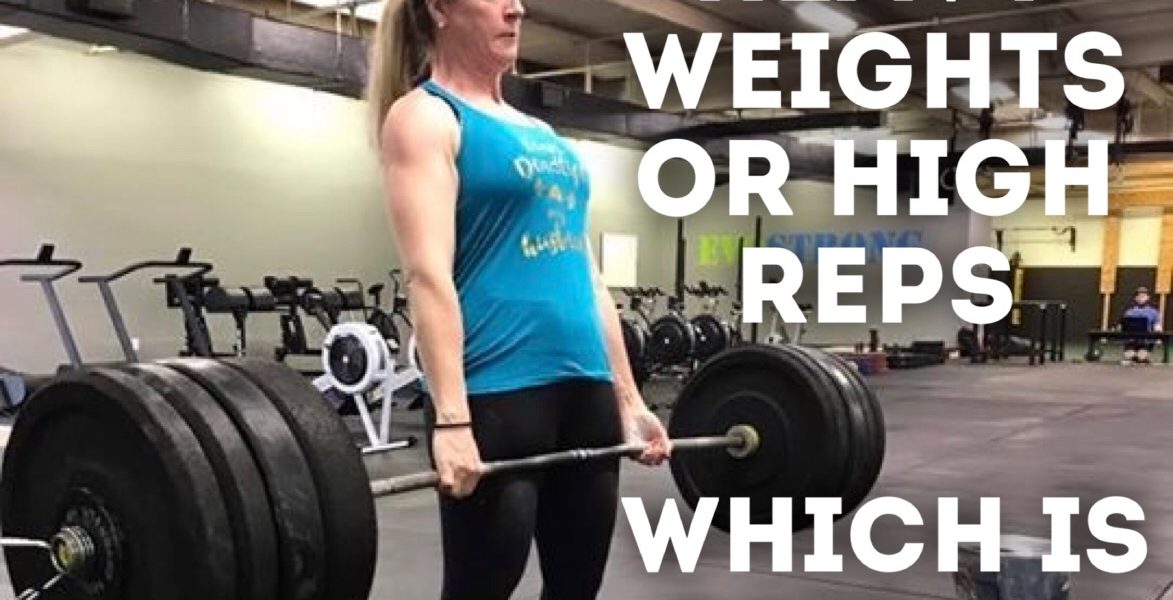High Weight or High Reps, Which is Better?
This is a question from a reader and one that coaches hear frequently. High Weight vs. High Reps – both workouts have their place. Most people think that high weight workouts will increase muscle size, and high rep workouts will lead to a thin, toned look. And a lot of women worry that lifting heavy will make them “bulky.” But the reality is far more complicated than that. It turns out that both modes of exercise have their place in your fitness program. And the real answer depends on your fitness goals. Ultimately, there is something more important than either high weight or high reps when it comes to reaching your goals.
Are you looking to lose weight?
If you are looking to lose weight, watching your calorie intake is essential. But you also need to ramp up your calorie burn rate. We all know that exercise burns calories. But many people don’t realize that some types of exercise cause your body to burn calories for a long time AFTER your workout as well. The energy you torch during a workout depends both on the weight you lift and the number of times you lift it. Lifting heavy weights for a few reps can burn a lot of calories. And lifting lighter weights for many reps can burn the same number of calories. Likewise, a long run or an hour of biking will also expend a fair amount. But one of these workouts won’t really help you incinerate calories after the workout. The others will.
Your metabolism is fueled by oxygen. Measuring how much oxygen your body uses after a workout provides a measure of your basal metabolism. Specific types of exercise can increase your metabolism, and the amount of oxygen you burn, for hours after a workout. This increased metabolism is called Excess Postexercise Oxygen Consumption, or EPOC for short. EPOC is a way of measuring the increased metabolism you require to help rebuild and recover after a workout. Unfortunately, moderate sustained cardio doesn’t produce notable EPOC. When you are done with your hour-long jog, your metabolism rapidly returns to its baseline rate. But weight training can provide EPOC for hours after your workout is over! And all that extra metabolic activity can help you lose a lot of weight.
What is more important than how much weight you lift?
As I promised, there is something more important than either the weight or reps when it comes to increasing your metabolism. The most critical factor in causing EPOC is the intensity of your workout. Pure moderate cardio doesn’t have the same effect on your metabolism as weightlifting. Sorry Cardio Bunnies, you aren’t getting any EPOC from the hour you spent chatting on the elliptical! While running and other cardio activities certainly improve your heart and vascular fitness, they don’t help boost your basal metabolic rate. This is why most HIIT workouts are designed to leave you lying on the floor in a puddle, making sweat angels. Intense weight training in compound movements (think thrusters, deadlifts, wall balls, etc) are the best way to cause EPOC. Turns out making yourself wish for death can be one of the best ways to sustain your life!
Unfortunately, the more highly-trained your body becomes, the harder it is to produce EPOC after a workout. If you are unhappy because your weight loss and strength gains have slowed down, it’s an entirely normal situation. There are things you can do to kick-start your gains again. But those are a topic for another post and another time. (Yeah go ahead and hate me for that. But you know what? If you subscribe, we will send you a weekly update with the link to our new posts, so you don’t have to rely on Facebook announcements.)

Are light weights or heavy weights better for gaining muscle?
Both lightweight workouts and heavyweight workouts will result in muscle growth, aka hypertrophy. The strange thing is that they do it in different ways. Inside each muscle cell is a liquid full of carbohydrates that provide the fuel for muscle contraction. This fluid surrounds the proteins that actually make the cell contract. Exercise can cause increases in both the liquid fuel and the contractile proteins inside muscle cells. Lightweight, high-rep lifting leads to a more significant increase in the liquid of the muscle cell, which makes sense since this is the fuel for longer workouts. Conversely, high-weight, low-rep lifting causes a greater increase in the power-producing proteins in your muscle cells. This also makes sense since more muscle proteins means stronger contractions and the ability to lift more weight.
So if your athletes are looking to gain muscle bulk, a combination of both light high-rep and heavy low-rep lifting will provide a significant and complementary increase in size. But you need to discuss their nutrition also. If athletes are looking to pack on muscle, then they will have to increase their dietary intake to provide the building blocks for that tissue. Otherwise, their bodies will cannibalize other tissue to repair the muscle after every workout.
Okay, but which is better for gaining strength?
If people are trying to increase the maximum weight they can lift, then it certainly makes sense to focus on heavier weights in training. Most studies show that increasing the number of reps your athletes perform at sub-maximal weight (think 90% of their 1 Rep Max) can have the greatest increase in pure strength gains. Steadily increasing the number of times you can lift a heavy weight will increase your ultimate strength without the risks that come with constantly trying to push your 1 rep max. While high rep workouts will increase the number of contractile proteins in your muscles, it won’t do it as quickly as heavier weights at lower reps. But ,unless your athlete is specializing in strong-man competitions, a mixture of both workouts will usually provide the quality-of-life improvements they want.

It’s important to note that the athletes’ prior level of training plays a big role in this recommendation. In studies that use subjects without prior weight training experience, rapid strength gains are seen regardless of whether heavy or light weights are used. There are many reasons for this that we will discuss in a future post. To avoid injury in new clients at your box, I highly recommend sticking to light loads that can be controlled throughout the full range of compound exercises. Have your new athletes focus on form instead of maximum weight and the gains will come. Moving toward heavier weights is something that you should really only focus on in your well-conditioned athletes looking to achieve specific goals. Otherwise, your athletes will be at risk for injury.
“TL;DR – I skipped to the bottom in hopes that you would summarize.”
Well fine, let’s wrap this all up in a bow for you impatient types. Which is better, High Weight at Low Reps, or Low Weight at High Reps?
- Both will help you burn calories for hours after a workout.
- Both will help you lose weight better than moderate cardio.
- Intensity is more important than the weight of what you lift.
- High weight and High Reps will both increase the size of muscles.
- Endurance will be better improved by High Reps.
- High Weight will enhance your maximum strength more.
- Whether or not you get “bulky” is more dependent on your diet and genetics than the weight you lift.
Hopefully you’ve found this post educational. You may have noted that we added an email signup field to our posts. If you enjoy our content and find it helpful, please sing up for our weekly email list. Don’t worry, we won’t sell your email to anyone else. And we won’t flood you with emails. It’s just a way of helping you get our weekly blog posts delivered directly to your inbox. That way you won’t miss any just because Social Media outlets decide not to show you our content some weeks.
Until next time, keep lifting and keep living.

